
This year our proposal includes the realization of two simultaneous exhibitions, for which we consider dividing the Stand into two different spaces. We will then present an individual exhibition of 4 historical sculptures by the sculptor Elías Heim from Cali, as well as the collective exhibition: OTRAS FLORAS, by the artists Miguel Böhmer, Leonardo Herrera and Daniela Vargas Victoria.
4 HISTORICAL WORKS- ELÍAS HEIM
Since the beginning of his career, Elías Heim has conceived sculpture in an expanded way, as a contextual and problematizing element of the space in which the work inhabits. He is considered one of the precursors of the installation in Colombia, when he made his first large-scale works in the 1990s, after his return to Colombia, after completing his studies in Germany. Heim's sculptural work usually involves machines and devices that are the result of the reinterpretation of existing objects in which he subverts their old uses, to resignify them and give rise to generally monumental artworks, in which said artifacts take on a new poetic, symbolic and functional dimension. Elías frequently reflects on the role of museums in contemporary society, as well as on events of great historical importance at a national and international level. This proposal presents a selection of 4 historical works by the artist made between 1992 and 2013: Acariciador de paredes agujereadas, Entrenador para curadores, Donde Rosa y Gulgolet.
OTRAS FLORAS
Art and nature are brothers, branches of the same tree. And they are so above all because of the inexplicability of many of their processes, mainly that of creation, as well as the effects they produce on their respective audiences. John Fowles The reflection on the connection between the natural world and human creativity is somewhat urgent since it allows us to stop and rethink our relationship with what we have historically defined as natural, wild or original. These are already presented as distant and worn-out notions that we are forced to visit again, through the gaze, through which it is possible for us to access fragments of information, whether of a genetic, affective or sensitive nature, of what at some point could be conceived as nature in its original state. The following proposals by artists from Cali, Miguel Böhmer, Leonardo Herrera and Danielas Vargas, inhabit Places steeped in history, nostalgia and emotional memory. This set of reproduced, imagined and reinterpreted floras, coming from his most recent investigations, present us with different scenarios that occur in the field of longing, denunciation and imagination.
GRIS Gallery was founded in the city of Cali, Colombia, with the aim of creating a space to promote the exchange between artists, cultural agents, communities and marketplaces, around the research, dissemination and commercialization of contemporary artworks.
The gallery focuses its management on the promotion, development and commercialization of the work of both young and medium and long-term artists within the national art. It seeks to strengthen and accompany the growth of their careers while having a physical space with two medium-format rooms (380 m2) for the creation and consolidation of different investigations and proposals.
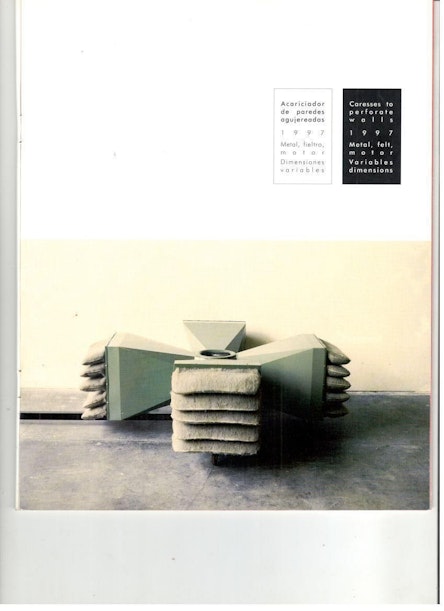
Elías Heim was born in Cali, Colombia, in 1966. He studied at the Bezalel Academy of Art and Design in Jerusalem and specialized in contemporary sculpture in Germany at the Kunst Academie in Munich and Dusseldorf. He has exhibited nationally and internationally since 1991 and his work has represented the country in numerous events such as the XLVI Venice Biennial, Art Across Oceans, Copenhagen, XXIV Sao Paulo Biennial, II Mercosur Visual Arts Biennial, Porto Alegre, Six Contemporary Artists , Madrid, Ibero-American Art Biennial, Lima, among others. He has received numerous distinctions such as the “El Janani” Award for the Arts in Jerusalem, the “Keren Sharet” Award from the América Foundation – Israel, and the First Prize of the III Bogotá Art Biennial, among others.
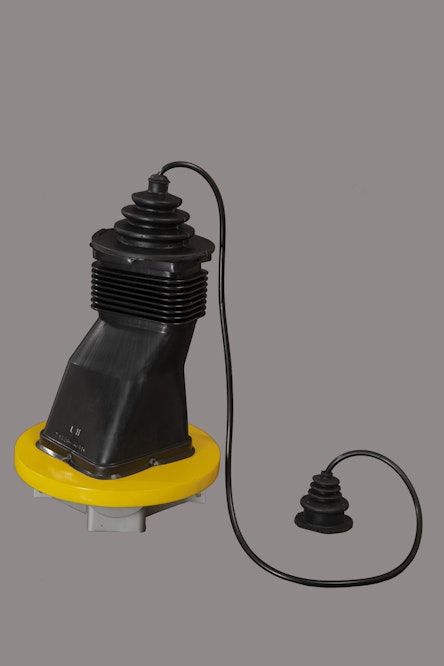
Elías Heim was born in Cali, Colombia, in 1966. He studied at the Bezalel Academy of Art and Design in Jerusalem and specialized in contemporary sculpture in Germany at the Kunst Academie in Munich and Dusseldorf. He has exhibited nationally and internationally since 1991 and his work has represented the country in numerous events such as the XLVI Venice Biennial, Art Across Oceans, Copenhagen, XXIV Sao Paulo Biennial, II Mercosur Visual Arts Biennial, Porto Alegre, Six Contemporary Artists , Madrid, Ibero-American Art Biennial, Lima, among others. He has received numerous distinctions such as the “El Janani” Award for the Arts in Jerusalem, the “Keren Sharet” Award from the América Foundation – Israel, and the First Prize of the III Bogotá Art Biennial, among others.

Elías Heim was born in Cali, Colombia, in 1966. He studied at the Bezalel Academy of Art and Design in Jerusalem and specialized in contemporary sculpture in Germany at the Kunst Academie in Munich and Dusseldorf. He has exhibited nationally and internationally since 1991 and his work has represented the country in numerous events such as the XLVI Venice Biennial, Art Across Oceans, Copenhagen, XXIV Sao Paulo Biennial, II Mercosur Visual Arts Biennial, Porto Alegre, Six Contemporary Artists , Madrid, Ibero-American Art Biennial, Lima, among others. He has received numerous distinctions such as the “El Janani” Award for the Arts in Jerusalem, the “Keren Sharet” Award from the América Foundation – Israel, and the First Prize of the III Bogotá Art Biennial, among others.

Elías Heim was born in Cali, Colombia, in 1966. He studied at the Bezalel Academy of Art and Design in Jerusalem and specialized in contemporary sculpture in Germany at the Kunst Academie in Munich and Dusseldorf. He has exhibited nationally and internationally since 1991 and his work has represented the country in numerous events such as the XLVI Venice Biennial, Art Across Oceans, Copenhagen, XXIV Sao Paulo Biennial, II Mercosur Visual Arts Biennial, Porto Alegre, Six Contemporary Artists , Madrid, Ibero-American Art Biennial, Lima, among others. He has received numerous distinctions such as the “El Janani” Award for the Arts in Jerusalem, the “Keren Sharet” Award from the América Foundation – Israel, and the First Prize of the III Bogotá Art Biennial, among others.
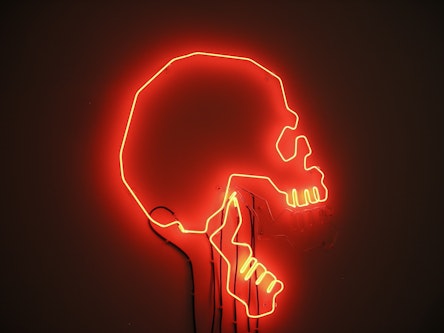
Elías Heim was born in Cali, Colombia, in 1966. He studied at the Bezalel Academy of Art and Design in Jerusalem and specialized in contemporary sculpture in Germany at the Kunst Academie in Munich and Dusseldorf. He has exhibited nationally and internationally since 1991 and his work has represented the country in numerous events such as the XLVI Venice Biennial, Art Across Oceans, Copenhagen, XXIV Sao Paulo Biennial, II Mercosur Visual Arts Biennial, Porto Alegre, Six Contemporary Artists , Madrid, Ibero-American Art Biennial, Lima, among others. He has received numerous distinctions such as the “El Janani” Award for the Arts in Jerusalem, the “Keren Sharet” Award from the América Foundation – Israel, and the First Prize of the III Bogotá Art Biennial, among others.
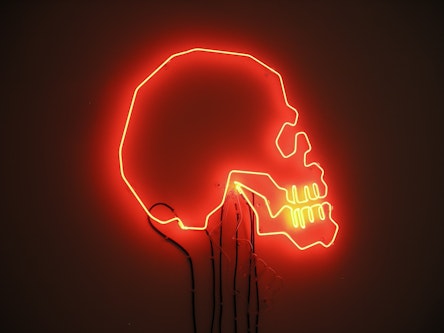
Elías Heim was born in Cali, Colombia, in 1966. He studied at the Bezalel Academy of Art and Design in Jerusalem and specialized in contemporary sculpture in Germany at the Kunst Academie in Munich and Dusseldorf. He has exhibited nationally and internationally since 1991 and his work has represented the country in numerous events such as the XLVI Venice Biennial, Art Across Oceans, Copenhagen, XXIV Sao Paulo Biennial, II Mercosur Visual Arts Biennial, Porto Alegre, Six Contemporary Artists , Madrid, Ibero-American Art Biennial, Lima, among others. He has received numerous distinctions such as the “El Janani” Award for the Arts in Jerusalem, the “Keren Sharet” Award from the América Foundation – Israel, and the First Prize of the III Bogotá Art Biennial, among others.
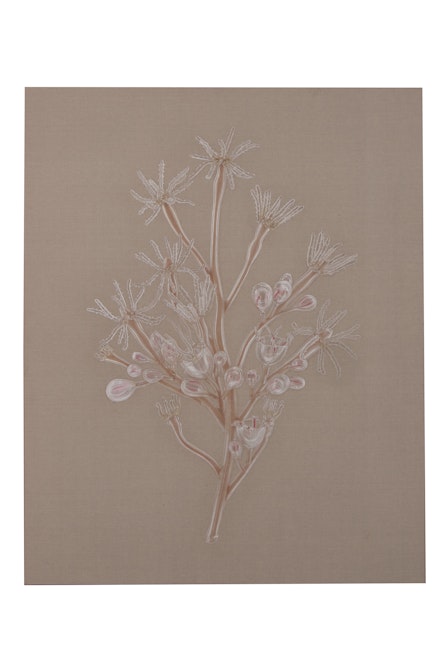
Miguel Böhmer, is a Plastic Artist, with an emphasis on painting and option in fashion studies, graduated from the Universidad de los Andes de Bogotá (1994). He completed his postgraduate studies (Master in Studio and Environmental Art) at New York University, (1997). His professional career has passed between Colombia, the United States and France. He has lived and worked in the latter country since 2003. Simultaneously, he has worked with different fashion houses, such as Chloé, Yves Saint Laurent, Givenchy and Céline. His work focuses mainly on the exploration of pictorial and sculptural means, through which he carries out different studies and approaches to the representations inherited from the scientific gaze of natural models; his aesthetic gaze feeds on the observation, classification and methodical reinterpretation of the procedural representations of the natural sciences. Taking up scientific illustrations, researchers and cartoonists from different historical moments, Miguel focuses his attention on a selection and taxonomy of individuals who bring a great diversity of formal, historical and aesthetic elements to his work. His work proposes a reflection on the phenomena of perception, at the same time that he problematizes the relationship between the model, the copy and the processes of reproduction of the scientific image; He raises his interest in the argument of subjective interpretation that starts from the natural model (by the scientific researcher), which is in turn reproduced and reinterpreted, now under the sensitive and aesthetic observation of the artist. Throughout his career, Miguel rescues in his works aspects related to botanical and animal references, some existing in our landscapes and nearby habitats, and others already extinct, as is the case of his Ammonites Humpriesianus, a subclass of cephalopod molluscs that existed in the seas from the Middle Devonian (about 400 million years ago) to the end of the Cretaceous period. “My current proposal is the result of my continuous fascination with the representation of different species of marine fauna and flora as a metaphor for the human body. Beyond the representation of the human figure, I focus on the essential structure of the landscape of marine figures. As for my perception, it is not simply a translation of the other, but the way one is reflected in front of the other. It is the memory and the power of transformation beyond the surface of the water. The linen support acts as a transparent space in which silence does not appear to be an absence of something but the presence of a whole”. His work has been recognized and awarded at the National Arts Club Twentieth Annual Studen Exhibition, the II Salón de Arte Joven of the Planetarium of Bogotá and the III Salón Séneca.
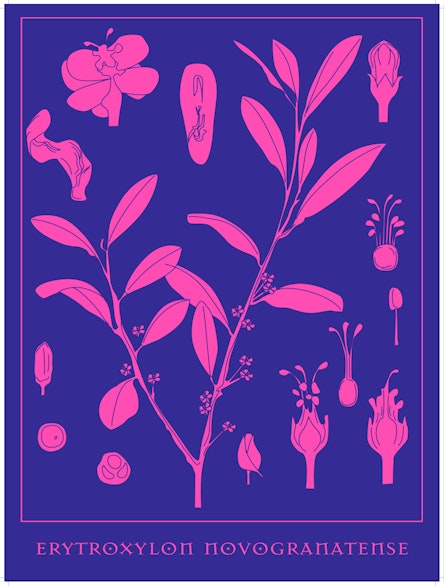
Leonardo Herrera is a plastic artist graduated from the Departmental Institute of Fine Arts of Cali; He has been invited to present his work in different projects and events of different institutions, nationally and internationally, as is the case of the 39, 40, 41 and 44 Salón Nacional de Artistas (Colombia); the Pinacoteca of the University of Concepción of Chile; Center of Photography in Geneva, Switzerland; SFMOMA, CEC (Center for Contemporary Expressions Paseo de las Artes and the Paraná River Rosario – Argentina). He is Co-founder of the Helena Producciones collective (non-profit Artists Association 1997-2009), creators of the Cali-Colombia Performance Festival. His work addresses, on the one hand, the drug phenomenon and its sociocultural implications in Colombia, creating a parallel between the alkaloid as a drug and the plant as a construction and a sacred symbol for communities and ancestral peoples. It seeks to point out the identity crises in the construction of the subject and the loss of space as territory. On the other hand, it investigates the scenarios of ideological conflict that create radical forms of exclusion, carrying out a constant search in the tensions that are generated between the public and the private - the subjective and the exterior, that the transits of rural life bring with them. to life in the cities. Leonardo makes a diversity of proposals using advertising media, mass media and graphic material to create bridges of encounter in difference and dialogue in alterity. Since 1997 he has been working on his work with Coca and cocaine. In Erythroxylum novogranatense, a two-color digital print made in 2003 and entitled with the scientific name of the Colombian variety of coca, Erythroxylum novogranatense, (one of the 250 existing species of coca), Herrera addresses the drug phenomenon in Colombia from perspectives, historical, ecological and political, as axes of criticism: “The image arises from examining the representations of the plant, and this nineteenth-century botanical illustration compared 2 visions. That of the grower and that of the botanist, evoking the Royal Botanical Expedition of the New Kingdom of Granada, perhaps the culminating moment of the representation of plants in the 19th century, happened in Colombia thanks to the work of José Celestino Mutis and his painters, who From Mariquita, and later from Bogotá, they did a gigantic job of anatomical classification of local species using the miniature technique, making at least 6 plates – plus some albums that are lost – dedicated to the flora of present-day Colombia. The extensive work of the Spanish naturalist, which took him almost 3 decades, is recognized for the artistic quality of the images, since Mutis had the good sense to train painters who magnified the specimens to more remarkable levels”. 1 He currently lives and works in the city of Cali, where he teaches at the Universidad del Valle and the Departmental Institute of Fine Arts. 1 Santiago Rueda. Silver and lead, A history of art and (il)licit substances in Colombia. Chapter 2. COCA-COCAINE. Pg. 28. Editorial Planeta Critica. Bogota Colombia. 2019.
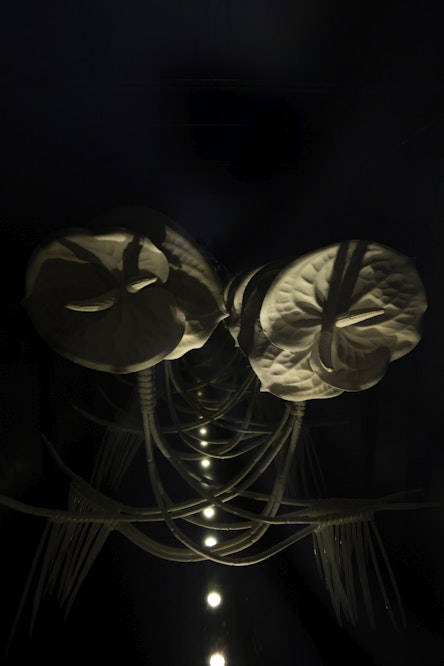
Plastic artist graduated from the Departmental Institute of Fine Arts (Cali-Colombia). He completed his master's degree in Artistic Production and Research with a specialization in Art and Intermediate Contexts, at the University of Barcelona, (2019) thanks to the Scholarship granted by the Bank of the Republic of Colombia within the framework of the "Young Talents 2017" program. . “Speculation about the multiple and imprecise paradigms of love, are for me a source of inspiration to create, taking as a reference my own and external experiences that revolve around affections, their causes, developments, projections, desires, ideologies and beliefs, rooted in a morality that is usually corrupted and fails. I inquire about love and falling in love from the spiritual and the carnal in all its forms and dispositions, understanding them as raw material to continue reflecting on the imposed sociocultural structures that inhabit the collective imaginary.” In Daniela's artwork, eroticism, sensuality, sexuality, love myths, as well as their impossibilities, wander as evident or encrypted arguments. To recreate that complexity of desire, the artist resorts to various strategies in the use of materials that allow her to communicate her positions regarding the social and moral constructions that surround, codify and condition contemporary affective relationships. In “Flora levitates in desire”, Daniela speculates on the diversity and fragility of sexual-affective ties today, building botanical metaphors on sexuality, through the manipulation of Anthurium flowers. This work is the result of specific circumstances, where one's own and another's intimate experience is presented as a testimony of those symptoms that inhabit desire, its fleeting nature and the intense and incessant need to establish connections and bonds with greater speed in a it was in which relationships become much more ephemeral, light and diverse. “Through this botanical metaphor, I allow myself to inquire about the sexuality of plants where the flower as the main element of Flora levitates in desire, deploys a large number of strategies to carry out sexual reproduction, generating a small comparative link with feminine seduction as a tactic to that of flowering plants”